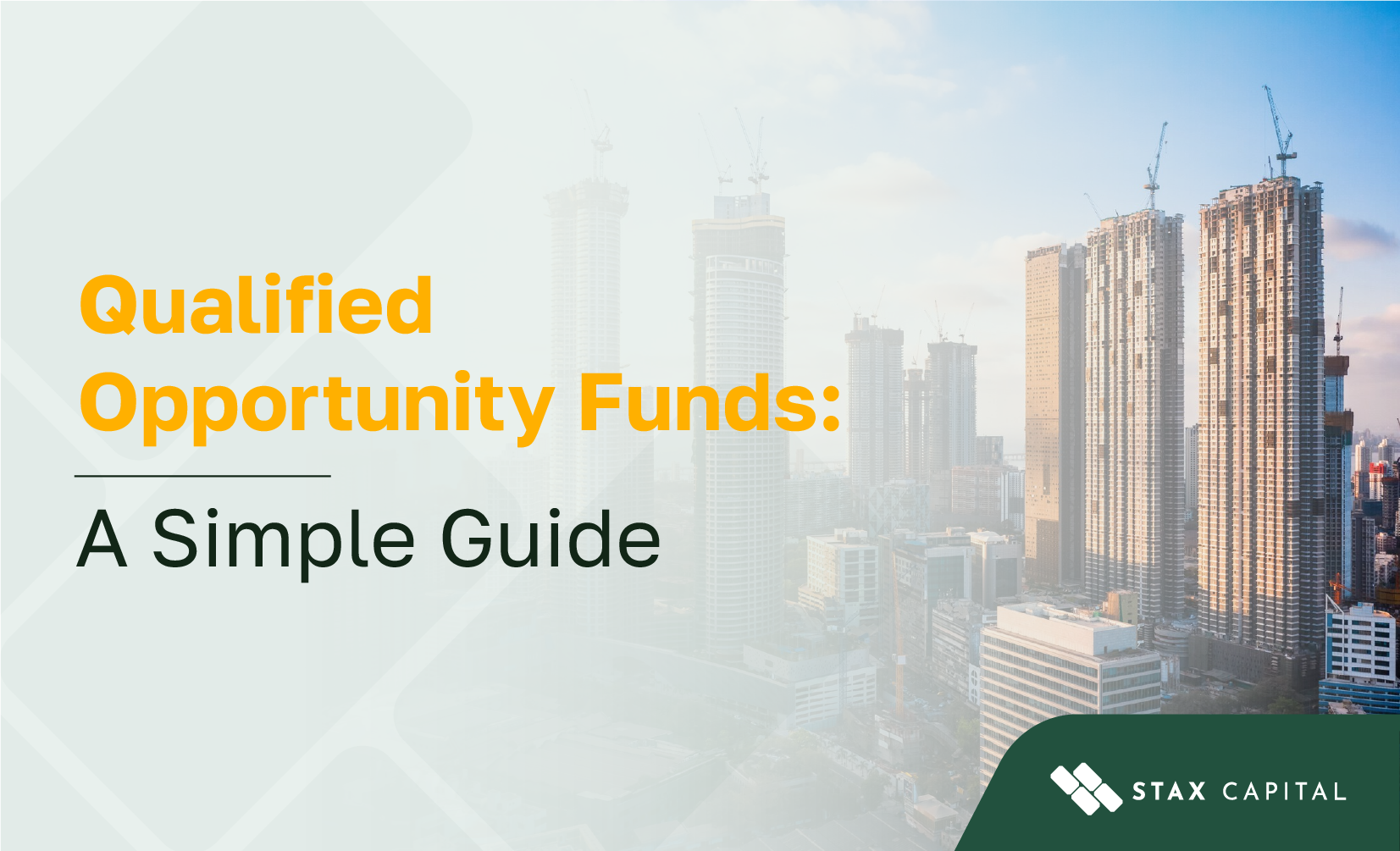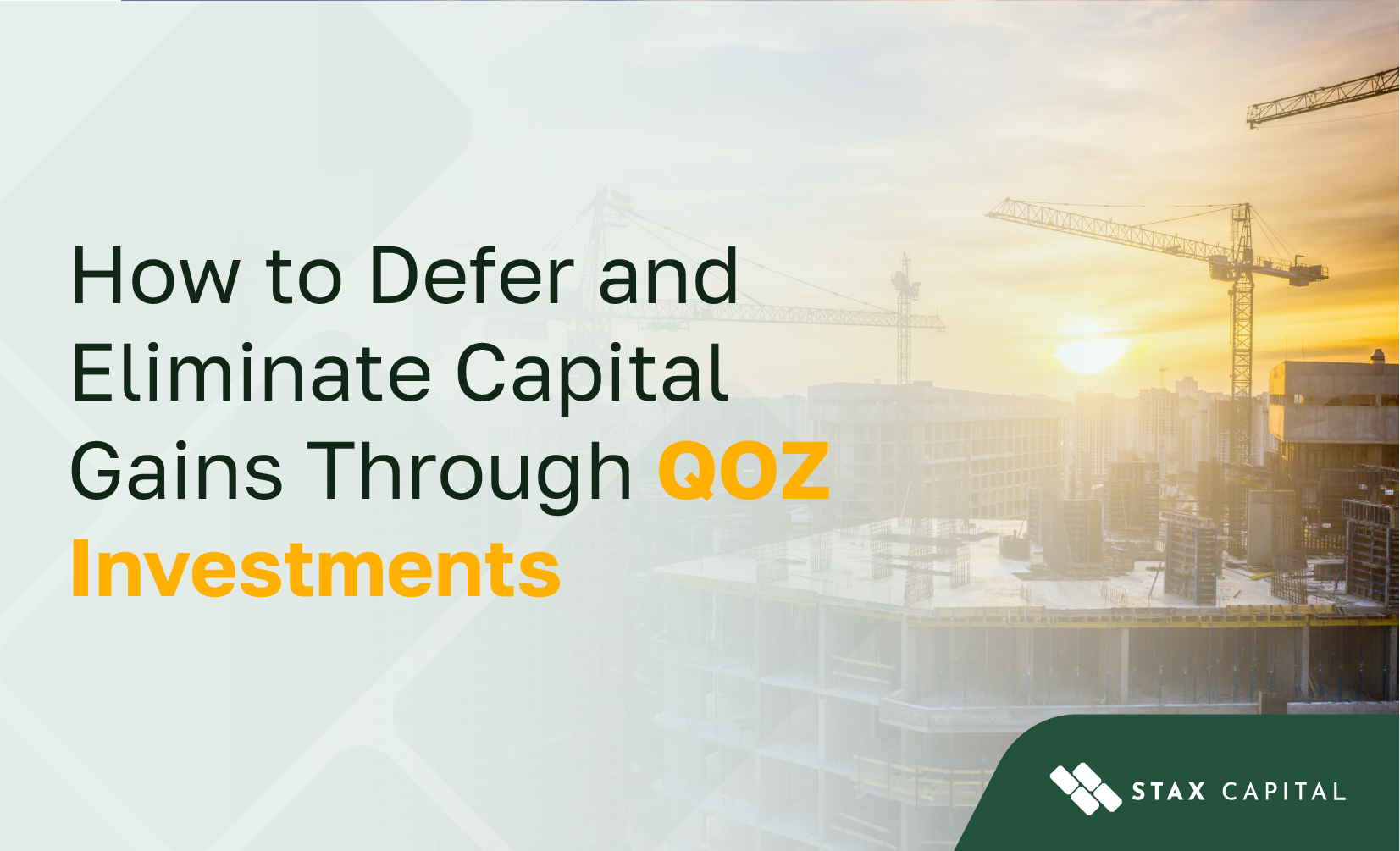Unlocking Qualified Opportunity Zone Tax Benefits: What Investors Should Know

Did you know you may be missing out on potential tax advantages available through Qualified Opportunity Zones, depending on your unique situation and eligibility? Many investors overlook Qualified Opportunity Zones (QOZs) simply because they don’t understand how they work.
However, these federally designated areas offer powerful tax advantages, including the ability to defer tax on capital gains, reduce taxable income, and even eliminate capital gains tax on long-term investments.
This guide will simplify QOZs and help you leverage them for federal income tax purposes and long-term wealth growth.
What Are Qualified Opportunity Zones?
Qualified Opportunity Zones (QOZs) were established under the 2017 Tax Cuts and Jobs Act to drive economic development and job creation in underserved communities. Investors can place capital gains and qualified 1231 gains into a Qualified Opportunity Fund (QOF)—an investment vehicle that files either a corporate federal income tax return or partnership return—offering multiple tax advantages.
To qualify, investments must be made in a Qualified Opportunity Zone Business (QOZB) or Qualified Opportunity Zone Business Property (QOZBP). The Internal Revenue Service (IRS) oversees these programs, ensuring investments are compliant with tax regulations.
Key Tax Benefits of Investing in QOZs
Investing in a Qualified Opportunity Zone (QOZ) isn’t just about building wealth—it’s also about unlocking powerful tax advantages. Here’s how investors can benefit:
Defer Capital Gains Taxes
One of the biggest tax perks of investing in a QOZ is the ability to delay paying taxes on capital gains. If you’ve made a profit from selling a business, stocks, real estate, or even collectibles like rare art, you can reinvest those gains into a Qualified Opportunity Fund (QOF) and push your tax bill to the end of 2026. However, you must invest within 180 days of selling your asset.
This rule has a few exceptions. If your gains come from a partnership, S corporation, estate, or trust, the 180-day period can start on the last day of the taxable year, the entity’s own 180-day deadline, or its tax return due date.
There’s one catch: if you sell your QOF shares before 2026, you’ll owe taxes right away. Plus, your original tax rate stays the same—short-term gains remain short-term, and long-term gains remain long-term. While this deferral won’t lower your tax rate, it buys time and allows you to reinvest more capital upfront.
No Capital Gains Tax on Growth
The biggest reward for long-term investors is the chance to benefit from tax exclusions on the growth of their QOZ investment. If you hold your investment for at least 10 years, any appreciation you earn is tax-free when you sell.
Most tax deferral programs only delay taxes—but QOZs can let you eliminate capital gains taxes on appreciation if all IRS requirements are met, including a 10-year holding period and proper fund compliance. Even after the QOZ program technically expires in 2026, you can still enjoy tax-free growth until 2047 as long as your investment stays in a QOF.
This may be a significant advantage for long-term investors, especially in zones with favorable economic trends. However, outcomes vary, and market conditions can shift. If your investment increases significantly, you could reduce your tax burden, though savings depend on appreciation, fund performance, and future tax law changes.
Shelter Income from Taxes
If you invest in real estate through a QOF, you can also reduce taxes on income generated by your property. Once the property is fully developed or renovated and has steady tenants, it will start producing rental income.
Thanks to depreciation, a key tax benefit in real estate, your taxable income can be much lower than your actual earnings. Depreciation accounts for wear and tear, reducing reported profits while keeping more money in your pocket.
For example, if your rental property earns $70,000 per year but has $30,000 in depreciation expenses, you only pay taxes on $40,000. This tax break allows investors to keep more of their earnings while still benefiting from real estate appreciation.
No Depreciation Recapture Tax
Depreciation is a double-edged sword. While it lowers taxable income during ownership, investors outside of QOZs must pay a hefty depreciation recapture tax—usually 25%—when selling their property.
But QOZ investors who hold their properties for 10+ years don’t have to pay this tax. Even though they’ve benefited from depreciation deductions, they may avoid the typical depreciation recapture tax, which can enhance net proceeds. As with all tax benefits, this is subject to eligibility and IRS compliance.
Excess Depreciation Can Offset Other Investments
In some years, a real estate investment may not generate much net income—especially during the early stages when occupancy is still ramping up. During these low-profit years, depreciation may exceed the income the property generates.
When this happens, investors can carry forward excess depreciation to offset future income. In some cases, they can even use these losses to lower taxes on other passive investments. However, this tax benefit depends on the investor’s ability to track and use these excess deductions properly.
Long-Term, Tax-Free Cash Flow
While many investors may choose to sell their QOZ investments after 10 years, others can keep earning tax-free cash flow until 2047. However, not all funds are structured to last that long, so it’s important to choose the right QOF with a long-term strategy.
This extended tax-free growth period may offer advantages depending on fund structure and market conditions. If a fund decides to sell a property early, investors might not be able to take full advantage of this tax-free window. That’s why choosing the right fund manager with a strong long-term vision is crucial.
Ready to Take Advantage of QOZ Tax Benefits?
Qualified Opportunity Zones can be a powerful tool for long-term investors with capital gains. By deferring taxes, benefiting from depreciation, and potentially eliminating future capital gains, these investments offer flexibility and upside—when managed correctly.
Want help evaluating whether a QOZ fits your goals? Let’s talk. Our team can walk you through the timelines, structures, and strategies designed for accredited investors seeking efficient ways to grow their wealth.



Share: